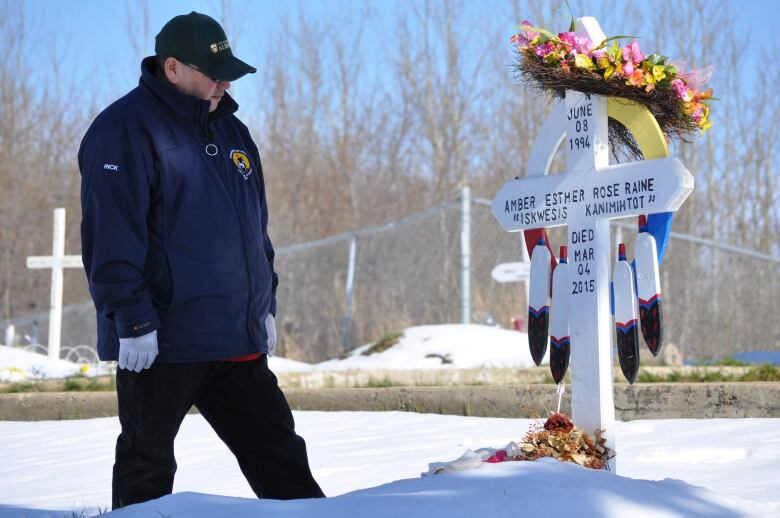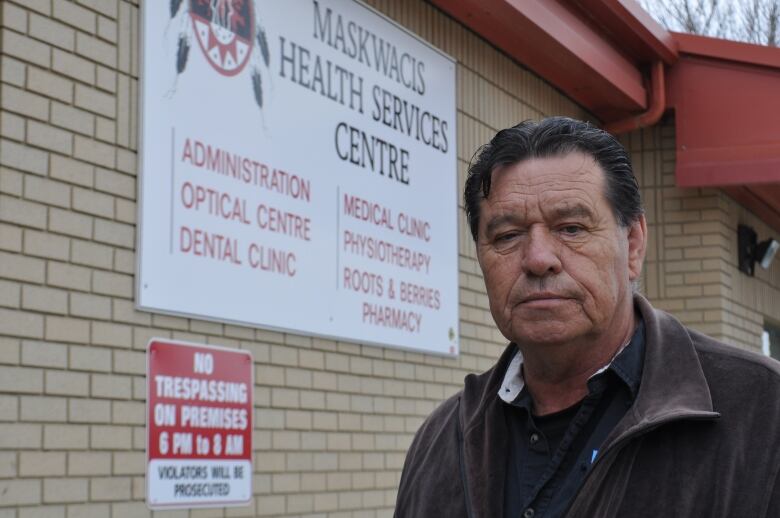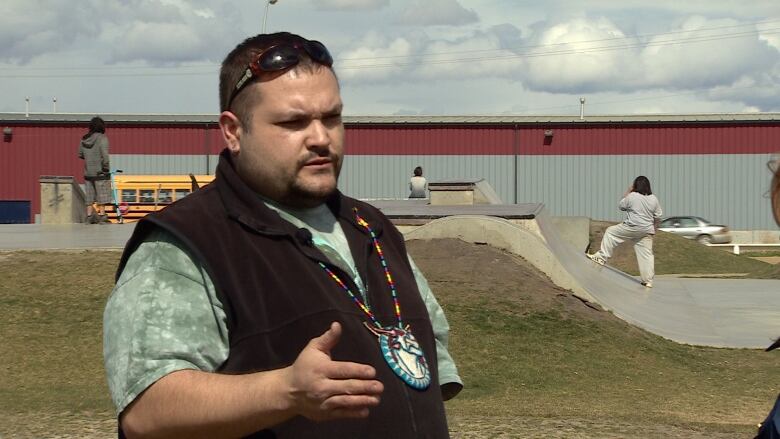Dramatic rise in Maskwacis suicide rate creates 'critical crisis'
'Its beyond crisis. Its an epidemic,' says Cree culture and education teacher
On the hilltop beside a tiny chapel, Rick Lightning gazes at the fresh grave of his 20-year-old daughter.
The youngest of 11children, Amber Lightning died March 4, one in a series of suicides that has shaken the small Cree community about an hour's drive south of Edmonton.

"No family can say, 'Not my family,'" notes Lightning, a grief counsellor and elder who lives in Maskwacis. "No family is safe. It doesn't matter what economic base you come from."
Since January 2013,close to 40 people have taken their own lives, says Randy Littlechild, executive director of Maskwacis Health Services. That includes a rash of suicides in March and April this year, wherethe community of 15,000 recorded one or two every week.
"To us, that's a significant number," says Littlechild, and the community is crying out for answers. "They're hurting, they're grieving. They want action, they want some help."
Suicide is the leading cause of premature death among Alberta's First Nations people. In a 2011 report, Health Canada noted the rate of suicide thereis three times that of the general population. But among those aged 15 to 24, that rate is doubled again.
"For the younger kids, it could be bullying in school, cyberbullying, it could be sexual interference," says Littlechild. "There's a lot of reasons, and you have to look at the socio-economic impacts of the community itself."
Among the recent rash of suicides is a growing number of adults and older people. Littlechild says unemployment, housing and education are contributing factors. He also lists the overall environment of the community.

"Four years ago, it was just murder, somebody was killing somebody. Now we're killing ourselves," says 16-year-old Monique Makokis.She once attempted suicide herself, and has lost friends and family members. She finds it all deeply disturbing.
"Unfortunately, in my perspective, I feel again that a lot of youth think it's the easiest way out," she said.
"Young people are thinking that the end result ... everything will be cured, not realizing the damage they leave behind," says Michael Bear, a Cree culture and education teacher, who is teaming up with Makokis to establish a suicide prevention group in the community.
"It's beyond crisis. It's an epidemic. It is beyond control." Bear says.
Makokis and Bear want to establish a grassroots suicide prevention program that will give young people a place to turn.
"The only way that you're going to seek support and seek guidance and seek knowledge is to find somebody, whether it's family, whether it's relatives, whether it's friends," says Makokis.
Help available, but not enough

Now they're issuing an urgent appeal to Health Canada's First Nations and Inuit Health Branch.
"We informed them that we have a crisis, or what we believe to be a crisis in our communities," he said.
"You have to have people with counselling background, you need to have more people with boots on the ground to be able to serve these people. We don't have enough."
The Maskwacis Health Centre currently gets funding for seven counsellors.
Community's plight discussed at United Nations
In April, a prominent member of the community travelled to New York to deliver an emotional statement to the UN's Permanent Forum on Indigenous Issues.
Wilton Littlechild is a lawyer andformer member of Parliament, and was a commissioner for the Truth and Reconciliation Commission of Canada. He recently lost a grandchild to suicide. He says the suicide rate among aboriginal people is also a national and international phenomenon.
"The persistent and ongoing obstacles are the lack of political will to dedicate adequate ongoing financial and human services to prevention," he told the forum.

While short on answers on how to solve the problem, Littlechild thinks a key problem is a sense of social isolation.
"The young people say to us that they don't belong anywhere, nobody loves them, nobody cares for them, so they're not worth anything. So there's a sense of desperation and a really high level of a loss of hope.
"What we're calling for in our case is that we need to base our prevention programs on both cultural, and spiritual and linguistic revitalization."
In short, he says, youth need positive, healthy lifestyle choices that will support a sense of identity, one they can be proud of. "And they will choose life over other options."
No easy answers
But for Rick Lightning, no easy answers can be applied to his daughter's death.
She had been pursuing her dream of working in theatre as a makeup artist, and was about to graduate, with honours from the program she was taking in Edmonton.
He believes she may have fallen in with the wrong crowd, and had been drinking. But that does nothing to ease his pain.
"There is always that empty seat, and it is never going to be filled again. And you just kind of live with that. You eventually come to accept it. Understand it? No. I don't think you can ever understand suicide."













_(720p).jpg)


 OFFICIAL HD MUSIC VIDEO.jpg)
.jpg)



























































































